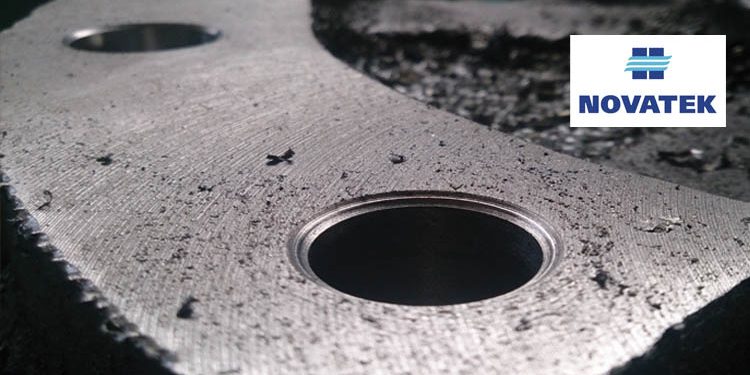Novatek STC: EPCM – The Challenges Facing Russia’s Engineering Companies
Alexey Yazkov, NOVATEK STC
(This material reflects the personal views of the author)
The engineering market along with the engineering companies are currently undergoing a painful transition from an earlier Soviet created system of providing engineering services through the sectoral institutions. With the customer being the government represented by government ministries and agencies into a system within the evolving market economy of customers and contractors, whilst eternally searching for and adapting their business models to the market conditions. Such a transition could not help but have had an impact on a once strong engineering capacity, which is now actually lost. During that time foreign engineering companies penetrated the Russian market especially for projects requiring high-tech solutions. It rendered the Russian engineering companies non-competitive due to the stopped technological advancement.
There is no doubt that the production efficiency and financial performance of the oil and gas downstream and upstream companies rely directly on the engineering companies’ level of development or, more specifically, the technology content, i.e. innovation of their applied technological and economic solutions and quality of their implementation. But let’s try to answer the questions of where and by whom these technologies should be developed.

The government, represented by ministries and agencies, is an institution that can fund long-term development of technologies similar to basic science. This was just the case in the Soviet era when research and development (R&D) and engineering and survey were contracted to the research and design institutes (“NIPIs”) by the sectoral ministries and agencies. At that time the design agencies were awarded complex government contracts for R&D and engineering and surveys, delivered them, grew and had sufficient resources and technologies to provide integrated services at a high technology level. When the Soviet system ended there was a period of stagnation following which we lost a once strong engineering capacity and now we are significantly inferior to the foreign global engineering companies. In modern times the responsibility to develop technologies is centered around three types of NIPIs based on ownership – the government NIPIs, vertically integrated oil and gas companies’ («super-majors») NIPIs and independent NIPIs.
On one hand, all companies perceive technology as a core mid-term component of competitiveness that guarantees a sustainable company growth and stable demand for its services. On the other hand, developing technology requires an environment created by the government and investment to close a measurable gap with the foreign engineering companies and leave them behind.
The environment created by the government is not sufficiently stimulating for engineering development at the moment, although it cannot be said that the government is not doing anything [Manturov D. V. Engineering Development Is Crucial Factor in Shaping Russian Economy of Innovation. Bauman Moscow State Technical University’s Bulletin, 2013]. However, the area of concern is that the existing business models of engineering companies and the government created environment clash with the long-term development strategy of these companies in their role as global players in the engineering market in competition with overseas players.
First, the services of the government-owned NIPIs from the days of USSR are engaged only by the ministries under public contracts. The super-majors are not willing to use the services of the government-owned NIPIs since they have their own research and development (R&D) and engineering centers within their boundaries as private companies that funnel the key engineering and R&D resources (around 80% of services are provided by the super-majors’ R&D and engineering centers).

These circumstances have led to the government-owned NIPIs never dealing with the actual challenges faced by the super-majors, which substantially deteriorates their expertise. They were pushed to the brink of the today’s engineering challenges of the oil and gas business. In view of this, the government-owned NIPIs are not the focal points for developing technologies and integrated engineering services.
Second, the independent NIPIs are mainly centered on services for small oil and gas upstream companies and standard designs where they operate as intermediaries between the super-majors’ NIPIs and the state expert review. At that the engineering role of the independent NIPIs is utterly marginal since all engineering solutions belong to either a capable engineering department within an O&G upstream company or a super-major’s NIPI in these circumstances. Hence, when bidding, the independent NIPIs have a competitive edge in stripping down their cost and putting a small mark-up, that’s why the quoted price for their services includes no investments for their own development and technology development. These companies aim for the same type jobs and avoid knowledge intensive, highly technical tasks. However, the Russian offices of the overseas service companies are intent on solving specific tasks requiring the non-out-of-the-box / innovative approaches. The cost of such solutions can exceed that of standard designs multifold so a super-major often engages the foreign NIPIs, thus investing into their development.
Third, the super-majors’ NIPIs might seemingly assume their role in developing the technologies necessary in the medium / long term and create a talent pipeline of highly qualified engineering professionals, experts, or, in short, an engineering elite, within their companies that might develop and sustain technologies. However, both government-owned and private super-majors aspire reducing their expenses, therefore, R&D is the most affected while the super-majors’ NIPIs are more concerned with the operational tasks of upstream companies, opting for quick-fix tactics and discouraged to develop the medium / long term technologies which are not considered a long-term competitive edge by them. And any R&D funding is, in their management’s view, a factor increasing the hydrocarbon production cost and curbing competitiveness in the final product market.
As a result, the Russian NIPIs do not proactively develop R&D without the O&G companies and government funding since R&D dictates a long-term investment. The corporate NIPIs are more inclined to adopt technologies to untangle their operational challenges while the independent and government-owned NIPIs get more and more pinpointed on the standard services for O&G companies due to non-existing R&D contracts. Yet the independent engineering companies may be the driver for developing technologies in an invigorating investment environment since technologies are their competitive advantage in the engineering market if we regard them as independent businesses.
Meanwhile there are many entry barriers for the independent players in the engineering market to implement the large O&G construction projects. This derives mainly from a heavily concentrated market, since the largest customers favor a narrow group of captive companies that impede their entry to the market and growth. It curbs competition and hinders the technology development by the independent companies. In view of this, our independent engineering segment is underdeveloped.
To grow and invest in technologies one should work under an EPCM framework and earn profit at every stage of creating (adding) value. The inadequate scale of independent companies’ business does not allow highly technical under a full-cycle business model, as an EPCM (Engineering, Procurement, and Construction Management) company. Basically, the Russian customer has no expertise in the field of engineering, construction and operation of O&G facilities aiming for the turn key services at the highest levels of risk for the EPCM contractor’s business and the lowest levels of risk for the customer. In view of this, only a full-cycle engineering company with financial stability, necessary equipment and manpower along with the capability to promptly mobilize these resources for the project can take on a complete work scope and the responsibility for its delivery. Only large captive, “non-market”, companies that have little motivation to develop technologies possess these characteristics while the modern, independent companies are prompted but do not possess such qualities which is a barrier to entry for them in the large projects.
Another issue with the independent engineering companies is that their business models are more focused on winning the large standard EPCM contacts with a vanishingly small share of new technologies while the small scale of their business keeps them from assuring the customer of their financial stability and suitability for such projects. That’s why such contracts are awarded to the large construction companies of the super-majors.
To sum up, the development of the Russian engineering in the O&G field is possible through the independent engineering companies that see engineering as a stand-alone business and aim for developing technologies to build their competitive edge. A business model that is not focused on the large construction EPCM projects but on the search for and selection of a high-tech small scale engineering niches under the EPCM framework, e.g., design and construction of small LNG (liquefied natural gas) and GTL (gas to liquid) units, is perceived as the best growth opportunity for the independent players in the engineering market. Implementation will bring new experience and profit to invest into business growth and expansion to ensure investment prospects and a competitive edge for the large construction companies of the super-majors and the global overseas engineering companies in the field of high-tech challenges. But there are still some issues with the lack of experience in implementing such projects. As such the project accomplishment should capitalize on the foreign engineering companies’ relevant experience and be participated by the small innovative businesses of the academic institutions. This will integrate foreign and domestic technologies and world-class project management experience in the small projects, build knowledge databases, introduce the best cutting edge practices and technologies thus building momentum for aggressive growth and consolidation of Russian companies and their coming to the market of the large EPCM projects.











